#jane campion: the cinema woman
Explore tagged Tumblr posts
Text
'If I like my cage...' "Freedom and fatherlessness have split the heroine into two disconnected halves — a partly factitious determination to be her own master, and a dark fascination with images of dominance and submission"
About Henry James & Jane Campion, The Portrait of a Lady
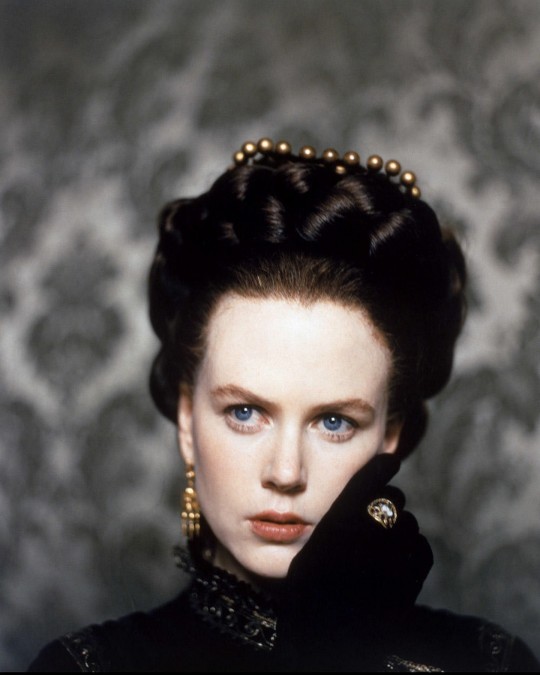
“What Isabel wants is to be initiated: even if it means being attracted to darkness.”
“According to Jane Campion, the key to the film and to the novel lies in Isabel’s psychology rather than in purely technical feats. She considers Alfred Habegger’s study as one of the best keys to Isabel, especially when he writes:
“Freedom and fatherlessness have split the heroine into two disconnected halves — a partly factitious determination to be her own master, and a dark fascination with images of dominance and submission.”
(Sophie Menoux: “We are all Isabel Archers” A “Bonne Femme” Conversation with Jane Campion and Laura Jones)
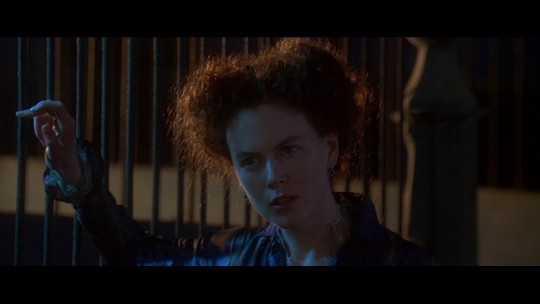
“You were the last person I expected to see caught.”
“I don’t know why you call it caught.”
“Because you’re going to be put into a cage.”
“If I like my cage, that needn’t trouble you,” she answered.”
… “You must have changed immensely. A year ago you valued your liberty beyond everything. You wanted only to see life.”
“I’ve seen it,” said Isabel. “It doesn’t look to me now, I admit, such an inviting expanse.”
“I don’t pretend it is; only I had an idea that you took a genial view of it and wanted to survey the whole field.”
“I’ve seen that one can’t do anything so general. One must choose a corner and cultivate that.”
“That’s what I think. And one must choose as good a corner as possible.”
Henry James, The Portrait of a Lady, Chapter 34
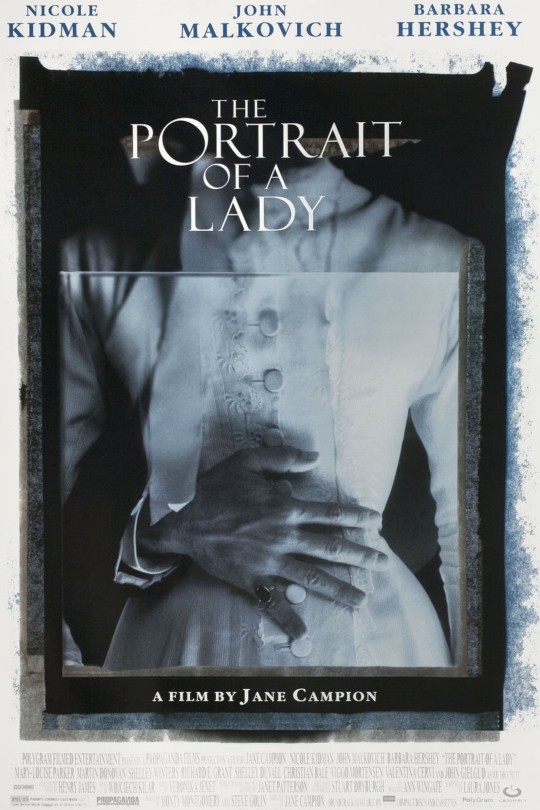


Film: Jane Campion, Nicole Kidman
#art#heroine#literature#cinema#jane campion#love#henry james#movies#director#american literature#classic literature#english literature#portrait#goddess#girl power#nicole kidman#darkness#film director#freedom#life#novel#woman#the portrait of a lady#isabel archer#initiation
12 notes
·
View notes
Text

Shelley Duvall
1949-2024.
Shelley Duvall a skinny, buck-toothed, eccentrically beautiful actress whose style was so quirkily naturalistic that it seemed like no style at all, was one of the major actors of the 70s and early 80s. She was discovered by Robert Altman and cast as one of cinema’s weirder femme fatales in Brewster McCloud (1970), then appearing so regularly in his films – as a young prostitute sharing an unexpected idyll with farmboy Keith Carradine in McCabe and Mrs. Miller (1971), reteamed with Carradine in the lyrical crime drama/romance Thieves Like Us (1974), an amoral groupie (and 70s fashion plate) in Nashville (1975), President Cleveland’s wife in Buffalo Bill and the Indians (1975), co-starring with soul sister Sissy Spacek in 3 Women (1977) and delivering one of the best comics-to-live action performances of all time as Olive Oyl in 1980’s Popeye – to qualify as his muse. 1980 also brought arguably her best-known performance as the terrorized wife of Jack Nicholson in Stanley Kubrick’s version of Stephen King’s The Shining (one of the great women-in-peril horror performances). She also appeared in small character roles for Woody Allen in 1977’s Annie Hall (“Sex with you is really a Kafkaesque experience. I mean that as a compliment.”), Terry Gilliam (Sharing a running gag with Michael Palin as hapless lovers in 1981’s Time Bandits) Fred Schepisi (counseling “godbrother” Steve Martin in 1987’s Roxanne), Tim Burton (the mother of a mad-scientist child in the 1984 short Frankenweenie) and Jane Campion (playing Cassandra to Nicole Kidman in 1996’s Portrait of a Woman). She was one of the best. This one hurts.
1 note
·
View note
Text

cinema | Venice Film Festival : the participants
The participants of the competition program of the 80th Venice Film Festival have become known. Among them: the picture of Luc Besson "Dogman", the film by Sofia Coppola "Priscilla" about the relationship between Priscilla and Elvis Presley, their family life and divorce, as well as the second directorial work of Bradley Cooper - the biographical film "Maestro" about the composer and conductor Leonard Bernstein (in Cooper himself will play him in the film).
Main Competition
The Commander Directed by Edoardo De Angelis Promised Land Directed by Nikolai Arcel Dogman Directed by Luc Besson Premonition directed by Bertrand Bonello "In the Off Season" Directed by Stefan Brize Aeneas Directed by Pietro Castellitto Maestro Directed by Bradley Cooper Priscilla Directed by Sofia Coppola Dawn at Last Directed by Saverio Costanzo "Lubo" Directed by Giorgio Diritti Origin Directed by Ava DuVernay The Killer Directed by David Fincher "Memory" directed by Michel Franco I'm the Captain Directed by Matteo Garrone "Evil Doesn't Exist" Directed by Ryusuke Hamaguchi Green Border Directed by Agnieszka Holland The Theory of Everything Directed by Timm Kroeger "Poor Unfortunates" directed by Yorgos Lanthimos The Count Directed by Pablo Larrain Ferrari Directed by Michael Mann Adagio Directed by Stefano Sollima "Woman" directed by Malgorzata Szumowska and Michal Englert Holly Directed by Fin Troch
The film festival this year will be opened by the film "Commander" directed by Edoardo de Angelis. The opening film was originally supposed to be The Pretenders by Luca Guadagnino, starring Zendaya, but the premiere was delayed due to a cast strike. The closing film will be Juan Antonio Bayona's thriller "The Society of the Snow".
American director Damien Chazelle ("La La Land") became the chairman of the international jury of the Venice Film Festival this year, the jury of the festival also included director and screenwriter Jane Campion ("Power of the Dog"), director Laura Poitras ("All Beauty and Bloodshed" ), director Mia Hansen-Löw (Bergman's Island) and playwright and director Martin McDonagh (Banshee Inisherina).
The film screening will be held on the island of Lido (Italy) from August 30 to September 9.
1 note
·
View note
Text

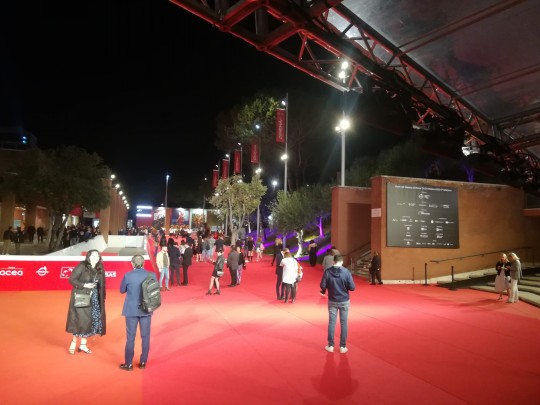
17° Festa del cinema di Roma
10 giornata
Era ora di Alessandro Aronadio A quanto pare gli italiani sono diventati bravissimi a rifare sempre lo stesso film, in questo caso anche benino. Telefonato
In a land that no longer exist di Aelrun Goette Il sogno di libertà dei giovani nella DDR dell'89 avrebbe meritato una rappresentazione meno consolatoria e patinata. Menzione speciale per la colonna sonora.
Jane Campion: the cinema woman di Julie Bertuccelli Paure, dubbi, incertezze ma anche tanta forza, convinzione e ironia in questo bel ritratto di una grande regista. Recuperatelo
Klondike di Maryna Er Gorbach L'occupazione del Donbas vista dal di dentro, dal fronte, non quello militare ma quello dei civili per i quali, come citato nel film, è vitale sapere chi è il nemico.
#festa del cinema di roma#mine#commenti#10 giornata#era ora#alessandro aronadio#in a land that no longer exist#aelrun goette#jane campion: the cinema woman#julie bertuccelli#klondike#maryna er gorbach
4 notes
·
View notes
Text
Hi I've been summoned by my good friend and paisano @jar-jar-ate :)
I'm not reaaally an expert in explicitly queer films but there's homoeroticism EVERYWHERE in classic westerns and spaguetti westerns (the italian 60's version of what a western should be) and I happen to be a huge classic cinema nerd so here you have it.
So, my recs in this matter:
Homoeroticism and queer coding in Hollywood westerns:
Red River (Howard Hawks, 1948)
It's a well-known fact that Montgomery Clift was queer; his character and the relationship between him and John Ireland's character in this movie is considered very much queer-coded.

The Ox-Bow Incident (William A. Wellman, 1942)
In this one there's a interesting subtext about what is to be considered "weak" and queer in a toxic masculine culture (and viewers are put in the queer POV, so sided with the queer people).

Johnny Guitar (Nicholas Ray, 1954)
This one is weird, it's not about gay or lesbian relationships BUT there's plenty of queer and gender-non-conforming themes (i wouldn't call them "subtle" as well) because it's about two woman in the prototypical masc roles in the classic western and a man being merely a love interest. It's a freaking GOOD movie. One of my favs.

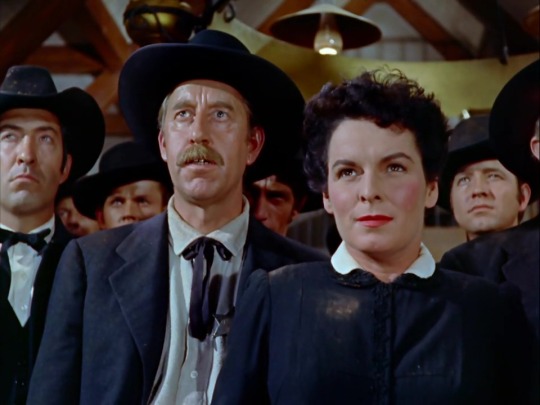
Calamity Jane (David Butler 1953) is also very gender-non conforming and lesbian coded (and a musical...!) but i've heard (this one is still on my watchlist) that is a little bit bended into appear heteronormative in the end.
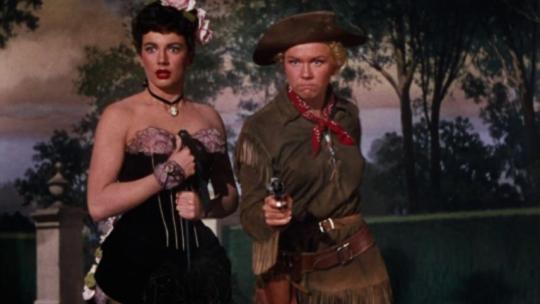
Homoeroticism and gay representation in spaguetti westerns:
Well, many people think that italian cinema in the 60s and 70s is pretty homoerotic by hollywood standards. People nowadays ship Clint Eastwood's Man with no Name character with almost every masc character in the Dollars Trilogy. But, if I may, the best example is:
Quien sabe? (AKA A bullet for the general, Damiano Damiani, 1966)

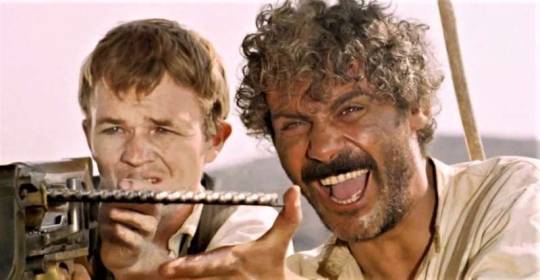
Oh boy this isn't just vibes. Niño and Chuncho have really SOMETHING between them. And I have a huuge crush in Gian María Volonté who portrays Chuncho so I'm not completely neutral about this movie but I'm pretty sure you're gonna love it.
Also I've not seen this one but I've been told that in Django Kill… If You Live, Shoot! (Giulio Questi, 1967) there's plenty of (unhinged i think? Not really sure but that's what they say) gay rep. It's also in my watchlist! (Tomas Milián portrayed a lot of queer coded characters in his career much like Montgomery Clift)
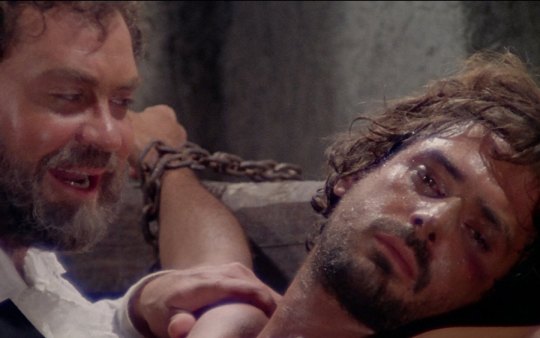
More modern westerns:
I'm sure somebody have already told you about Brokeback Mountain (Ang Lee, 2005 )and about Strange way of Life (2023), a short by Pedro Almodovar with Ethan Hawke and Pedro Pascal. It's nice, not my favourite but well made.
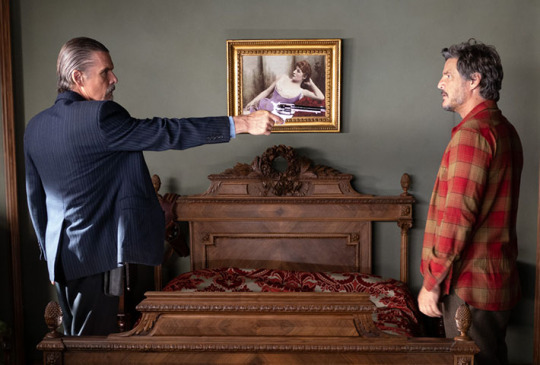
More in the not-explicit-but-queer-coded side of the scale there's this 90s flick, Ravenous (Antonia Bird, 1999). If you enjoy (or tolerate) gore and canibalism metaphors you're gonna love this one. If you liked Hannibal I would give this a chance rn.

I also enjoyed The Power of the Dog (Jane Campion, 2022) and the complex power dinamics between queer characters in a more late western age.

I hope you find something you like in this list! Enjoy!
does anyone have any queer western recs? I'm having very specific media cravings lately and I need this.
30 notes
·
View notes
Note
🙄😌🙊🥹🥵 but I want romcoms or romantic dramedies pls and thx
Thank yoouuu, and oh man, this was actually surprising hard, haha.

Eyeroll emoji - Adam's Rib (1949). You can never really go wrong with a Katharine Hepburn and Spencer Tracy romcom, they're both excellent actors with chemistry for days (like, god, there was a reason they were in nine romances together) and this one is probably my favourite. In it, they play a married couple who are both lawyers who end up working on opposite sides of the same case - a case where a neglected woman attempts to kill her husband. At the time of it's release, it was a bit of a grenade and it actively tackled conversations of changing gender roles in post-WWII America, and the social and relationship pressures a lot of people felt. You really feel the fact that it was co-written by a woman too, and even beyond the great premise, it's genuinely really funny. Eyeroll emoji only because - - well, it did come out in 1949 so some of the gender politics are outdated to say the least, haha.
Relieved emoji - Bright Star (2009). Yes, sure, this movie is technically a 'tragedy' or whatever, but it's totally a comfort film for me too. It's so exquisitely made, and is probably my favourite Jane Campion film. The story of the poet John Keats' romance with Fanny Brawne is just really tenderly told, and the cinematography is to die for.
Don't speak emoji - The Children's Hour (1961). This movie never seems to feature in conversations of early lesbian cinema, which is a real shame, because it's genuinely very good and I think features possibly both Audrey Hepburn and Shirley Maclaine's best performances. At an all-girls school, a vindictive student accuses two of her teachers of lesbianism, and it trickles out in ways most of them couldn't imagine.

Holding back tears emoji - Hold Back the Dawn (1941). Another teacher-themed one just for youuuu. The synopsis of this movie always sounds a little silly, but it has so much heart and is inherently a film about kindness. A Romanian male sex worker is trying to get into the US to meet up with his lover who's recently married a man there in a green card marriage. He gets stopped at the border though and ends up stranded in Mexico. While he's there, he meets a teacher from America who's out with her school group, and plans to marry her for the green card, only to actually fall in love with her in the process. Olivia de Havilland is always my #1, and she's just so, so sweet in this, as are Charles Boyer and Paulette Goddard. It's really a movie about how to find and build a home, and I just love it a lot.
Hot emoji - The Handmaiden (2016). Oh man, what can I say about The Handmaiden? In Japan-occupied Korea in the 1930s, a young Korean woman is hired to be handmaiden to a reclusive Japanese heiress, only the handmaiden is actually a pickpocket recruited by a swindler posing as a Japanese Count who's trying to rob the heiress blind. And that's basically just the first ten minutes. I know you're going to hate this, haha, but the best way to go into The Handmaiden is without knowing much about it, because it is a ride. It's also a deeply intimate and compelling love story and while I do think some of the sex scenes can be a bit much, on the whole it's a movie that oozes sensuality and I love that for it and for me.
Send me an emoji + a genre and I’ll send you a movie rec
7 notes
·
View notes
Photo
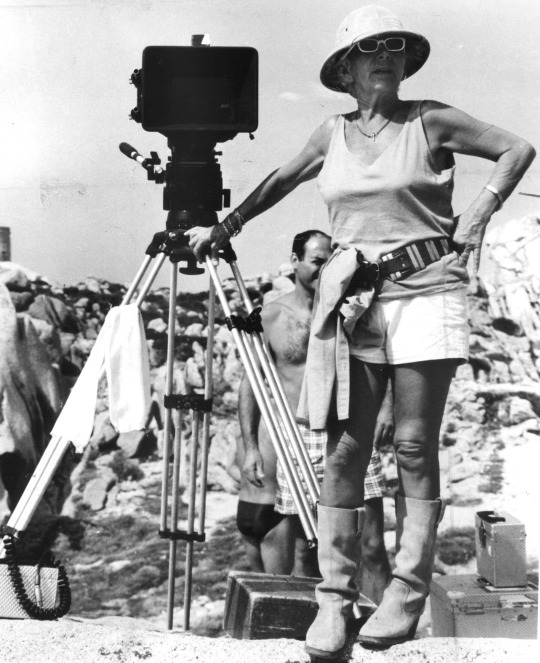
Lina Wertmüller, Italian Director of Provocative Films, Dies at 93
Lina Wertmüller, who combined sexual warfare and leftist politics in the provocative, genre-defying films “The Seduction of Mimi,” “Swept Away” and “Seven Beauties,” which established her as one of the most original directors of the 1970s, died overnight at her home in Rome, the Italian Culture Ministry and the news agency LaPresse said on Thursday. She was 93.
The culture minister, Dario Franceschini, said in a statement that Ms. Wertmüller’s “class and unmistakable style” had left its mark on Italian and world cinema, The Associated Press reported. “Grazie, Lina,” he said.
She was the first woman to receive an Academy Award nomination for best director, for “Seven Beauties” (1975).
Ms. Wertmüller, an Italian despite the German-sounding last name, burst onto the cinematic scene with a series of idiosyncratic films that propelled her to the front rank of European directors. All had screenplays written by her, and most relied on the talents of her two favorite actors: Giancarlo Giannini, usually cast as a hapless male chauvinist victimized by the injustices of Italian society and baffled by women, and Mariangela Melato as the always difficult and complicated love interest.
In the broad sense, Ms. Wertmüller was a political filmmaker, but no one could ever quite figure out what the politics were. A lively sense of human limitations tempered her natural bent toward anarchy. Struggle was noble and the social structure rotten, but the outcome was always in doubt.
Antiquated codes of honor undo the title character in “The Seduction of Mimi,” a dimwitted Sicilian laborer, played by Mr. Giannini, whose neglected wife stages a sexual revolt. In “Swept Away” (1974), Ms. Wertmüller upended the Italian power structure by giving the humble deckhand Gennarino (Mr. Giannini again) absolute power over the rich and arrogant Raffaella (Ms. Mercato) after a shipwreck.
After being dominated and abused, Gennarino turns the tables, and Raffaella becomes his adoring slave — until the two are rescued, and the old order reasserts itself. Feminists objected. With a characteristic bit of obfuscation, Ms. Wertmüller explained that since Raffaella embodies bourgeois society, “therefore she represents the man.”
In “Seven Beauties” (1975), Ms. Wertmüller again courted outrage by using a German concentration camp as the setting for a grim comedy, with farcical overtones. This time, Mr. Giannini played Pasqualino Farfuso, a craven Neapolitan deserter and two-bit charmer who, determined to survive at all costs, seduces the camp’s sadistic female commandant and, directed by her, murders other prisoners. Critics were divided over the merits of the film, but it earned Ms. Wertmüller the Oscar nomination. Not until 1994, when Jane Campion was nominated for “The Piano,” would another woman be nominated.
Ms. Wertmüller’s reputation, always more elevated in the United States than in Europe, remained uncertain. With “Seven Beauties,” the critic John Simon wrote, Ms. Wertmüller ascended “into the highest regions of cinematic art, into the company of the major directors.” The critic David Thomson, on the other hand, ascribed her American popularity in the 1970s as “probably inevitable in a country ravenous for a female purveyor of smart cultural artifacts.”
And her brand of sexual politics encountered hostility from critics like Pauline Kael, Molly Haskell and Ellen Willis, who called her “a woman-hater who pretends to be a feminist.”
Tiny and voluble, with a fierce smile and instantly recognizable white-framed eyeglasses, Ms. Wertmüller disarmed criticism by unleashing verbal torrents of explanation in a gravelly alto. Vincent Canby, after listening to her hold forth during a publicity tour for her first English-language film, “The End of the World in Our Usual Bed on a Night Full of Rain” (1978), wrote in The New York Times that she spoke “with enthusiasm and at such length and so articulately that (to vary an old Hollywood joke) it seems Warner Brothers might do better to scrap the film and distribute the director.”
Arcangela Felice Assunta Wertmüller von Elgg Spañol von Braueich was born in Rome on Aug. 14, 1928, to a family of noble Swiss ancestry. Her mother was the former Maria Santamaria-Maurizio; her father, Federico, was a successful lawyer and a domestic tyrant with whom she quarreled constantly. After obtaining a teaching certificate she hedged her bets by enrolling simultaneously in law school and a Stanislavskian drama academy in Rome. Theater won out.
During the 1950s, Ms. Wertmüller toured with a puppet theater, wrote musical comedies for television and worked as an actress and stage manager. Her best friend, married to Marcello Mastroianni, introduced her to Federico Fellini, who hired her as an assistant director on “8½,” a life-changing experience that opened the world of film to her.
In 1963 she directed her own film, “The Lizards,” a study of provincial life in the vein of Fellini’s “I Vitelloni.” It was followed by the quirky “Let’s Talk About Men” (1965), a study of sexual politics that foreshadowed her later explorations of the subject.
Ms. Wertmüller’s long collaboration with Mr. Giannini began in television, when she directed him in the musical “Rita the Mosquito” (1966) and its sequel “Don’t Sting the Mosquito” (1967), whose art director, Enrico Job, she married in 1968.
Mr. Job died in 2008. Information on survivors was not immediately available.
The 1970s presented Ms. Wertmüller with two of her richest subjects: the changing sexual politics brought about by feminism, and increasing political turbulence in Italy, as old social structures and attitudes buckled under the pressures of modernity. “The Seduction of Mimi,” chosen as an official entry at the Cannes festival in 1972, immediately established her as an important new filmmaker. “Love and Anarchy” (1973), with Mr. Giannini playing a bumbling country boy who tries to assassinate Mussolini, and the social satire “All Screwed Up” (1974), solidified her reputation for idiosyncratic political films blending tragedy and farce.
Somewhat paradoxically her career went into steep decline after the Academy nomination, although in 2019 she received an honorary Oscar for her work, and in 2016 she was the subject of a documentary, “Behind the White Glasses.”
“The bubble seemed to burst,” the British critic Derek Malcolm told The Guardian, adding that “she could do nothing right.”
The titles of the films grew even longer, and the critical response more uniformly hostile. “The End of the World,” with Candice Bergen as an American photographer and feminist engaged in marital struggle with an Italian communist played by Mr. Giannini, was roundly dismissed as raucous and incoherent. Each succeeding film seemed to bear out Michael Wood’s observation, in The New York Review of Books, that Ms. Wertmüller’s work displayed “a stunning visual intelligence accompanied by a great confusion of mind.”
By the early 1990s she had qualified for inclusion in Variety’s “Missing Persons” column. “Ciao, Professore” (1994), about a schoolteacher from northern Italy mistakenly transferred to a poor school near Naples, suggested a return to form, but on a small scale, and with an unexpected sweetness. For perhaps the first time in her career, Ms. Wertmüller faced the charge of sentimentality.
To this, as to all criticism, she responded by invoking the ultimate authority: herself. Her films, she liked to say, were made to please an audience of one, and her methods were intuitive.
“I am sure of things only because I love them,” she said. “I am born first. Only then do I discover.”
📷 Photo above: Lina Wertmüller on the set of “Summer Night” on the island of Sardinia.
Daily inspiration. Discover more photos at http://justforbooks.tumblr.com
48 notes
·
View notes
Note
i saw your post about seeking out art made by women.. do you have any recs?? ik its a hard q to answer so i understand if you dont have time!!! <3
absolutely! this is such a broad question so i’m going to go with the films that i like/want more people to watch, but if you want a more specific genre or time period let me know.
a new leaf (1971, elaine may) is the funniest film of all time and my favorite film. jeanne dielman (1975, chantal akerman) is the greatest film that has ever been made. these are my two favorite films by women and i think everyone should see them.
in no particular order, these are the films that have had a huge impact on me and came to me at the right time in my life: mikey and nicky (1976, elaine may), pariah (2011, dee rees), but i’m a cheerleader (1999, jamie babbit), wendy and lucy (2008, kelly reichardt), cameraperson (2016, kirsten johnson), obvious child (2014, gillian robespierre).
these are the films that i think everyone should watch, aka “my canon”: any short films by alice guy-blaché (youtube is your friend!) but especially falling leaves. shoes (1916, lois weber), mabel’s strange predicament (1914, mabel normand) (we wouldn’t have the charlie chaplin we know today without mabel normand!), the adventures of prince achmed (1926, lotte reininger), the smiling madame beudet (1923, germaine dulac), merrily we go to hell (1932, dorothy arzner), mädchen in uniform (1931, leontine sagan), meshes of the afternoon (1943, maya deren), mary ellen bute’s animated shorts, outrage (1950, ida lupino), shirley clarke’s dance films, le bonheur (1965, agnès varda), the house is black (1963, forugh farrokhzad), wings (1966, larisa shepitko), daisies (1966, vera chytilova), wanda (1970, barbara loden), i am somebody (1970, madeline anderson), lady with a sword (1971, kao pao-shu), betty tells her story (1972, liane brandon), hester street (1975, joan micklin silver), dyketactics (1974, barbara hammer), illusions (1982, julie dash), losing ground (1982, kathleen collins), blood diner (1987, jackie kong), near dark (1987, kathryn bigelow), the piano (1993, jane campion), daughters of the dust (1991, julie dash), the watermelon woman (1996, cheryl dunye), and SEE WE ARE NOT EVEN INTO THE 2000S YET!
this list may seem overwhelming. do not let it. i went long and detailed to prove a point, which is that we have been making films in every decade and on every continent, in every genre. my lists have blind spots! i have my own biases.
my advice to you and whoever else reads this is to ask yourself what genres you gravitate towards and what kinds of films you like, what decades you love, what international cinema you find interesting, and then start googling! go to letterboxd! watch some of my recs, or completely disregard them. you know your taste the best, and i guarantee there’s a million films by women you’ll love. for every film i put on here i left out FIVE similar ones.
i’m happy to give more tailored recommendations if you’d like, but this is a really broad list covering a lot of film history. dig in! see what you like and let me know what speaks to you! godspeed and have a blast! i wish i could see all these films again.
290 notes
·
View notes
Text
'He wanted to do something for her and wished she would ask it of him. She would ask nothing but questions.' (The Portrait of a Lady)
Video: 'a general impression of life' Nicole Kidman, Jane Campion, Henry James
films7 on x/twitter
#art#love#cinema#jane campion#nicole kidman#life#the portrait of a lady#literature#classic literature#woman#henry james#novel#american literature#actress#lady
4 notes
·
View notes
Text
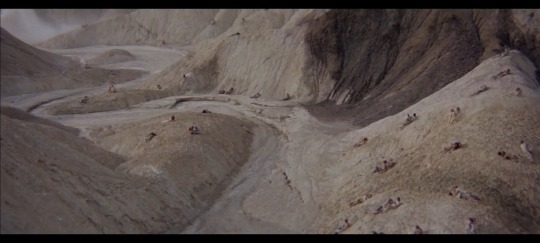
Movies I watched this Week #130 (Year 3/Week 26):
Nobody goes to bed on Sunday night in order to wake up early the next morning and read my weekly film reviews... :(
🍿
My first by Pan Nalin from Gujarat, Last Film Show. Definitely, an Indian love letter to the magic of movie-making, a-la 'Cinema Paradiso'. Semi-autobiographical memories of a boy helping the poor projectionist at a remote, primitive village. Sweet, beautiful and sentimental.
It ends with a surprising recitation of names, a list of directors who inspired this homage: Kubrick, Chaplin, Lean, Maya Deren, Godard, Coppola, King Hu, Zhang Yimou, Ozu, Keaton, Spike Lee, Jane Campion, George Méliès, Bigelow.... 7/10.
🍿
2 Road Movies:
🍿 First watch: Zabriskie Point, my 9th by Michelangelo Antonioi, with a screenplay co-written by Sam Shepard. A symbolic counter-cultural cult experiment, about a young student who steals a small Cessna, flies to Death Valley, where he meets a young woman, participate in a dust-covered orgy with her, and flies back, to be shot by the 'pigs'. (Photo Above).
With music by both Pink Floyd AND The Grateful Dead, as well as Roy Orbison AND The Rolling Stones. Also, with G. D. Spradlin! 6/10.
🍿 There were news that Salvation Mountain and the outcast community at Slab City by the Salton Sea had been sold to some kooky religious cult. So this was a good excuse to see Sean Penn's Road movie Into the wild. The true story of a young individual who rejects the material world, and while searching for meaning and self, is escaping to the edge of the world, to the wildness of Alaska. A long, romanticized homage to alternative lifestyles.
🍿
75 years ago this week, the New Yorker published Shirley Jackson's harrowing story 'The Lottery'. A small New England town observes an annual tradition, in which a member of the community is selected by chance and stoned to death to ensure a good harvest and purge the town of bad omens.
A terrifying tale about mob mentality and blind tradition, the story was adapted to educational television (by Encyclopædia Britannica!) in 1969. At 19 minutes long, The Lottery is just as upsetting and intense as the original story. (With Ed Begley Jr. as a little child.) 9/10.
🍿
My first 2 by Lars von Trier:
🍿 I studied film at the University of Copenhagen at the same time Lars von Trier attended the attached film school there, even though our paths never crossed. When he screened his experimental first feature The element of crime, I thought it was one of the most unusual and mysterious films I had ever seen.
So why did I always resisted seeing any of his other movies? On re-watch, 40 years later, 'Element of Crime' holds up. Multilayered, surrealist, literary and incredibly original. It begs the comparison to heavyweights like Orson Wells in 'The third man', and Fritz Lang's M. Fragmentary, visually masterful, drenched in yellow and red filtering, it's full of dystopian despair, water everywhere, nocturnal rituals and a continent falling apart. Dark and nightmarish, one of the greatest debut films of all time. 7/10.
🍿 Von Trier actually directed another film before that: The 1982, 57-minutes Images of Liberation (Befrielsesbilleder) was his film school graduation film, and it created such a stir, that it was given a regular theatrical distribution, a first in Denmark.
A German officer in 1945 visits his Danish mistress days after the end of the Nazi Occupation. Like the more accomplished 'Element', it's a visually-original manifesto, impressionistic and nearly abstract art, filmed all in sepia and red filters, and again played in a foreign language (German). It's obvious he was a film prodigy even then.
Available on low-res YouTube. 2/10.
🍿
..."Osbourne Cox? I thought you might be worried… about the security… of your shit"...
You stumble across a short clip called What did we learn, Palmer? and immediately you must stop everything you do and re-watch Burn after reading for the umpteen time. Another one of the Coen Brother's infectious, addictive fun rides, where every line of dialogue is memorable, and every single character is unforgettable (Linda Litzke, Manolo, the Tuchman Marsh Man, divorce lawyer, plastic surgeon, David Rasche's CIA guy ...).
Funniest Coen Brothers script + the fantastic dildo machine! 10/10.
🍿
Le Brio ("Brilliance") is a French Comedy about extraordinary law professor Daniel Auteuil who is also a politically-incorrect anti-hero, an old-fashioned racist, misanthropic prick. After he publicly insult a young Arab student, he is being forced to mentor her for a prestigious national debate competition, or lose his tenure. What do you know? In the course of the year of them working together, they learn to respect each other and find humanity in their opposite backgrounds! Lovely with a schmaltzy happy end. 4/10.
🍿
More misogyny! Woman Haters is a short musical 'novelty' by the Three Stooges from 1934. At one point it was acceptable to tailor a casual slapstick routine around "WH", The Woman Haters Club, without betting an eye. Crude, violent and unfunny. 1/10.
🍿
The devil all the time, my first unpleasant film with boring, bland actor Tom Holland. It's an Appalachian Hillbilly Gothic, full of dark incidents and over-powering ugliness. Nearly two and a half hours of badly-played tragedies, suicides, White Trash religiosity, serial killings and despair, with too many confusing bad characters, and none worth caring about.
🍿
..."I’m nothing… I’m naval lint"…
Re-watch: True Lies is one of the few action movies I ever loved. From James Cameron, the undisputed champion of Hollywood box office. 90's action And comedy. Another movie that was structured with a stopwatch, so that exactly every 10 minutes, a 'pinch point' took place (The Swiss prologue 0-15, The DC hotel fight 30-40, The Helen interrogation exactly at 1 hour, 10 min. mid-point, Arriving in Florida, exactly at 1:30. Etc.). 7/10.
🍿
The In-laws, the 1979 "classic" sitcom-style comedy with 'Lieutenant Columbo' and "Sheldon the dentist". Also with David Paymer, James Hong and Ed Begley, Jr. But not as funny as it possibly was 40 years ago.
Also, Kevin Pollak Torments Alan Arkin. RIP, Alan Arkin.
🍿
5 More Don Hertzfeld shorts, again:
🍿 "...That's the thing about the present, Emily Prime. You only appreciate it when it is the past..."
Another constant re-watch, his World of tomorrow. the only science fiction movie I love, and one of my most favorite films - ever. The magic lies in the contrast between the scientific explanations of time-travel, neural networks and end-of-the-world vs. the spontaneous voice of the 4-year-old girl who doesn't care about any of it, and just hums "What a beautiful day it is". 10/10.
[I didn't have the heart yet to watch the following 3 episodes of it, even though they are similarly applauded.]
🍿 "For the love of God and all that is holy, my anus is bleeding!"
Rejected, his first Oscar nominated short from 2000. A simple, surrealist collection of anti-consumerist diversions. 9/10.
🍿 Wisdom tooth, a 5-minutes nightmare in mock-Swedish, about a guy trying to help another guy who has a toothache. 9/10.
🍿 His 2014 Simpson Couch Gag, an out-of-this-world dadaist riff on the Simpson opening routine. Mind-bending. I wonder what people thought of it when they sat down to watch the show.
🍿 Watching grass grow, a short time-lapse short of him as he animates his short 'The meaning of life'. Crude homemade animation, low-low-low-tech.
🍿
Wrestling X 2:
🍿 Twenty-five years ago, The Undertaker damn near killed Mankind in one of the greatest 'Hell In a Cell' matches in the history of professional wrestling. Mark Calaway and Mick Foley sat down to re-watch the infamous match that came to redefined each of their careers. [I know it's hard to believe it, but in the mid-90's, I loved watching WWE!]
Calling u/shittymorph!
🍿 Man on the moon, directed by Miloš Forman (so it features his colleague Vincent Schiavelli, but without the subtlety of his early films). A standard biopic about a weird comic with the 'different' sense of humor. Misunderstood genius or an obnoxious prankster? Jim Carrey's Andy Kaufman came across as unlikable, self-centered and uninteresting. With Norm Macdonald. 3/10.
🍿
3 X "So-Bad-I-Couldn't-Finish-Them-Films”:
🍿 Giva't Halfon Eina Ona / "גבעת חלפון אינה עונה" is a classic Israeli "Bourekas-film", which later became a cult film. Bourekas films (Like Spaghetti Westerns) were low-brow, broad comedies based on ethnic stereotypes, and often dealt with conflicts between Mizrahi and Ashkenazi Jews. This one starred the iconic trio 'Hagashashim'. Maybe if somebody saw it first time in 1976, it would be funny, but it aged badly. I lasted 13 minutes.
🍿 While you were sleeping, the apex of 90's romantic comedies and my first by Jon Turteltaub. Most of the chick flicks from that era did not age well, using cliched TV sitcom tropes throughout, from newspaper boys to cute voice mail messages to Christmas gifts. Cringy, saccharine, formulaic.
🍿 A Million Ways to Die in the West, a Seth MacFarlane western comedy, a riff on Blazing Saddles, with bad writing and terrible acting. I lasted for about 45 minutes.
🍿
Throw-back to the "Art project”:
Adora at Salvation Mountain and at Salton Sea (from 'Into the wild').
🍿
(My complete movie list is here).
2 notes
·
View notes
Text
"It takes a special kind of cold-blooded sadism to wield a banjo as a psychological weapon, but Phil Burbank pulls it off with almost casual cruelty.
Here’s the setup. In 1925 Montana, the widow Rose (Kirsten Dunst) has married the gentleman farmer George Burbank (Jesse Plemons) and has moved into the ranch mansion George shares with his brother Phil (Benedict Cumberbatch), who is horrified by the woman’s mere presence and couldn’t be bothered to disguise that. As the nervous, tentative Rose practices playing Strauss’ “Radetzky March” on the piano, striking the wrong keys time and again, she gradually becomes aware of an echo of the same song, coming from upstairs. There’s Phil in the shadows, expertly playing the song on his banjo, finishing with a flourish — and leaving Rose trembling and terrified..."
Netflix presents a film written and directed by Jane Campion, based on the book by Thomas Savage. Rated R (for brief sexual content/full nudity). Running time: 126 minutes. Opening Wednesday at the Music Box Theatre and the Landmark Renaissance Place Cinema in Highland Park, and available Dec. 1 on Netflix.
6 notes
·
View notes
Photo

The Eyes of TIFF.
Programmers for the 46th Toronto International Film Festival chat about the degrees of intensity they look for in a festival film, and help us zoom in on the gems from TIFF’s 2021 program, by genre and region.
“Intensity can be achieved in so many different ways. I know it when I feel it. You feel it in your gut.” —Cameron Bailey
It’s almost business as usual for TIFF this year. In-person events and red carpets return, but a healthy virtual program is also available for Canadian-based folk unable to travel, as the Covid-19 pandemic continues its onslaught.
TIFF co-head and artistic director Cameron Bailey has been with the festival for just over half its life, and says while some of the technology has changed in that time—“you’re no longer sitting in front of a TV monitor with VHS tapes… or waiting for 35mm prints to be spooled up and projected for you”—the “basic process of falling in love with movies” has not.
It’s a challenge, Bailey says, to winnow down the films he falls in love with for the final TIFF lineup. And even then, it is an annual challenge for film lovers tight on time to narrow down their own selections. So, ahead of the fest, Bailey joined fellow TIFF programmers for a Twitter Spaces conversation with our editor in chief Gemma Gracewood, in order to help Letterboxd members make some watchlist decisions.
Joining Bailey were Thom Powers (TIFF Docs), Peter Kuplowsky (Midnight Madness), Robyn Citizen (senior programming manager), Diana Sanchez (Special Presentations, Spain, Latin America, Portugal and the Caribbean), Diana Cadavid (International Cinema) and Nataleah Hunter-Young (Africa, “the Middle East” and the Black Diaspora).
Edited highlights of the conversation follow, so have your watchlists close at hand.
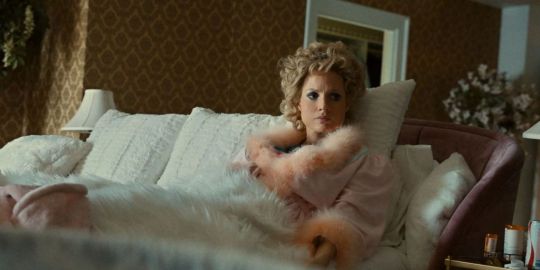
‘The Eyes of Tammy Faye’, written by Abe Sylvia and directed by Michael Showalter.
Thank you all for joining me today. You watch a lot of films as you’re going through the selection process. How does one make itself stand out to you? Cameron Bailey: For every programmer it’s going to be something different. For me, it comes down to an intangible quality of intensity. That can be emotional intensity, it can be the intensity of formal elements, the cinematography, the performances, the writing. Some sense of concentrated emotion and momentum, where you get the sense that a filmmaker is trying to find a way to distill the essence of what they’re trying to do and communicate it to an audience through all of the tools that cinema provides. That doesn’t mean the movie has to be fast-paced or have a lot of dramatic jolts, as intensity can be achieved in so many different ways. I know it when I feel it. You feel it in your gut.
What would you say are some of the performances that have struck you the most this year? CB: Jessica Chastain is the lead in a film we’re premiering called The Eyes of Tammy Faye, directed by Michael Showalter. If you were watching TV in the ’80s and ’90s, you will remember Tammy Faye Bakker, and her husband, Jim Bakker, who were TV televangelists. You couldn’t miss Tammy, as she had these giant eyes and makeup with giant eyelashes, and this is essentially her story. It’s hard to know at first that it’s Jessica Chastain underneath all of that makeup, but she gives a performance that’s not just about the exterior. It’s about a woman who is shaped by a difficult upbringing, shaped by this incredibly deep need she has for affirmation, to be on TV, to be in front of the camera, and that guides her decisions into extremes. She’s fantastic in it.
Benedict Cumberbatch is back with two films. He is the lead in Jane Campion’s The Power of the Dog. It’s an understated, slow-burn performance in some ways, which he can do so well. He’s also in a film that’s on the opposite end of the dramatic spectrum, The Electrical Life of Louis Wain. It’s based on a real person, and when you watch the film you will be amazed that this person actually existed. Wain, in the early part of the twentieth century, was a prodigious painter who turned his talent towards painting thousands of cats. Cute cats, big eyed cats, fuzzy, adorable cats. He’s largely responsible for cats becoming as big as they are as domesticated pets. It’s a wild story.
I’m still recovering from watching The Power of the Dog’s trailer earlier today, and had to promise myself that I wouldn’t take up this entire time talking about Jane Campion’s obsession with hands. The Spencer trailer dropped as well, which has a lot of buzz around it. CB: Yes, Spencer is a remarkable portrait. Some of us remember Princess Diana, some of us have watched The Crown, and so have a very recent image, but this is a completely different performance that Kristen Stewart gives. She’s remarkable in it. I think everybody’s going to want to see this film.
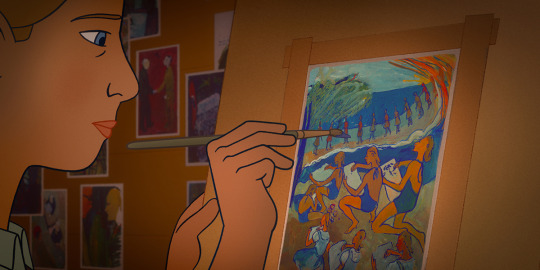
‘Charlotte’, written by David Bezmozgis and Erik Rutherford, directed by Tahir Rana and Éric Warin.
Are there any other titles you’d like to get the buzz started for, Cameron? CB: On the animation side, I would say people should look out for a film called Charlotte, by Tahir Rana and Éric Warin. It’s a Canadian film telling a story based in World War II Europe about a woman in a Jewish family [exiled] in France during the occupation of France by the Nazis. She can feel what is coming. She decides to paint everything about her life, and her family’s life, trying to document what she feels is going to be very fragile, and what she might lose altogether.
As it turns out, before the end of the war she was taken away to a death camp by the Nazi regime, and she didn’t survive, but her paintings have survived and they were turned into a book, along with the story of her family. The animation is just gorgeous. I think that’s one that awards bodies are going to be paying attention to. It’s one of the best animated films I’ve seen in quite a while.
Thom, what are some of the documentary titles that you and the team think those awards bodies will have their eyes on? Thom Powers: A big one to pay attention to is The Rescue, by Chai Vasarhelyi and Jimmy Chin, who won the Oscar for their last film, Free Solo. Their new film is looking at the Thai cave rescue [in 2018], when a group of young soccer players and their coach got trapped by monsoon floods in a cave. When we were watching the news, we were seeing the journalists reporting from outside the cave. What this film does is bring you inside that rescue using footage that’s never been seen before. Chai Vasarhelyi and Jimmy Chin are masters at the documentary adventure genre, and also [at] bringing a real human side to the people involved, which they do again here.
I’ll also mention Becoming Cousteau, by Liz Garbus, and Julia, a film about Julia Child, directed by Julie Cohen and Betsy West, who made the Oscar-nominated documentary RBG a few years ago. So many of us during the pandemic had to rediscover ourselves in the kitchen, and Julia Child’s life was about making people feel more comfortable in the kitchen, which makes it a terrific film to watch at this time.
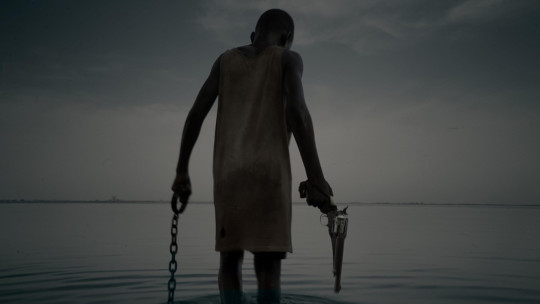
‘Saloum’, directed by Jean Luc Herbulot.
Peter, what’s a movie from this year’s Midnight Madness lineup you’d love to recommend? Peter Kuplowsky: We’ve got a lot of firsts at Midnight this year. We have Saloum, the first time a West African film has ever been in Midnight. We’ve also got Zalava, which is the first Iranian film to play in Midnight. Our opening film for Midnight Madness is Julia Ducournau’s Titane, which is playing at the Princess of Wales theater, and will be a spectacle to behold. When I’m looking for Midnight Madness, I like hearing the audience make certain noises in the room, whether that’s a gasp or screams or laughter. I feel that every note on the scale is going to be played during Titane by the audience.
Brilliant. Now, we’re going to bring in some audience questions. First up is Vincent, who says that one of their favorite films is Georges Franju’s Eyes Without a Face, and asks if there are any films in this year’s TIFF lineup you could recommend for a fan of that film? PK: I’ve really been encouraging people to check out the films I just mentioned, Zalava and Saloum, and I think Zalava especially would fit here, as it’s more of a horror-drama. It begins as something that is steeped in the supernatural, but as it escalates it becomes something of a pitch-black comedy while still maintaining a gravitas to it. I think it’s one of the most fascinating discoveries in the genre space this year.
CB: I’d also add Good Madam, by Jenna Bass, from South Africa. It is a chilling movie, with a bit of an Eyes Without a Face vibe. If you like that sort of approach to cinema, I think you’ll like that.
PK: Vengeance Is Mine, All Others Pay Cash just won the Golden Leopard at Locarno. With a title like that, this is a film that feels like it’s going to be sort of a strictly pulp crime film, but it’s so much more. It’s deeply romantic, incredibly eclectic, and beautifully shot on 16mm film. It feels like a film that was hidden away, shot in the late ’70s or early ’80s. It’s a throwback to 1980s Hong Kong action films, while also, I can’t stress this enough, being one of the most romantic films in the festival. You’ll fall in love with this relationship while it’s also working in fight sequences and magical realism.
Nataleah, what’s something you would recommend from your TIFF selections from Africa, “the Middle East” and the Black Diaspora? Nataleah Hunter-Young: One I’d highly recommend is Costa Brava, directed by Mounia Akl, from Lebanon. Even amidst what’s going on in Lebanon right now, the film offers a beautiful and engrossing portrait of a family that includes a grandmother who’s a non-actor, but has impeccable comedic timing (that travels through the subtitles if you don’t speak Arabic).
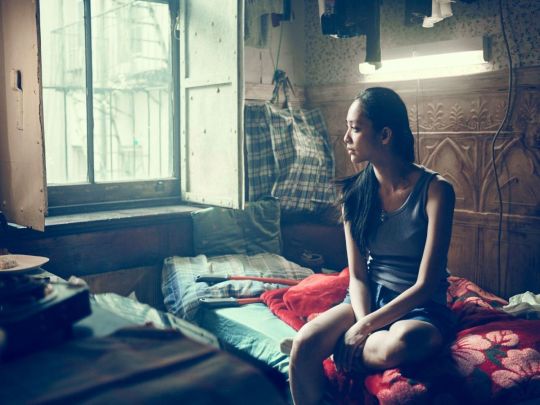
‘Snakehead’, written and directed by Evan Leong.
Robyn, what’s a movie that surprised you most during your selections this year? Robyn Citizen: I always recommend that people check out our Discovery section because that’s where we find new talent and nurture new voices. The film that really surprised me this year was Snakehead, by Evan Jackson Leong. Some people will know him from a documentary called Linsanity, and he did another documentary about evangelism in Korea. Snakehead has been a ten-year labor of love for him. He had to do a Kickstarter for the film, which is loosely based on the life of a woman named Sister Ping, who had a human trafficking ring that was the biggest trafficking ring for about 20 years.
The film tackles what’s going on now with vulnerable populations being trafficked into America, in particular Chinatown in the US, and the main character, played by Shuya Chang, has to fight to find her daughter. It’s an exciting film, and very moving. It’s extremely tightly edited, and it looks fantastic.
We’ve got our next question here from a member who says their favorite genre is science-fiction. While Dune is at the top of their watchlist, are there any other sci-fi selections you could recommend? PK: I would recommend After Blue (Dirty Paradise), which is a perverse science-fiction by Bertrand Mandico. It reminds me a lot of the French animated film Fantastic Planet. This one is about a planet which is inhospitable to men because of the way hair grows. The plot follows a young teenage girl who accidentally unleashes a notorious criminal that she and her hairdresser mother have to stalk through the alien landscape that is full of bizarre creatures and liquids and gases. I feel it’s kind of like the inverse of Dune, and an opportunity to explore a bizarre ecosystem.
NHY: I would totally insist that this member see Neptune Frost, from Saul Williams and Anisia Uzeyman. It’s a difficult film to put into words, but I’ve been summing it up by calling it an Afro-sonic sci-fi musical.
Whoa, that sounds like a whole new subgenre. NHY: That’s just the beginning. There’s a lot to experience in this film. It’s a cosmic romance that follows an intersex hacker and a coltan miner who make their way to this kind of dream space where they connect with others as they travel through these lush mountainous regions of Rwanda and Burundi. It’s a beautiful anti-narrative that is impeccably colored and totally consuming. It’s a must-see for anybody who loves cinema.
Diana, what would you say is the best debut feature that you’ve seen among this year’s international selections? Diana Cadavid: There are so many wonderful new talents, but I think I’ll go with an Argentinian filmmaker named Agustina San Martín. Her film, To Kill the Beast, is a co-production between Argentina, Brazil and Chile, and she worked for nine years to put this all together. She started working on it when she was 21, and we were actually having a conversation yesterday about her process, and how it’s a film that deals with the growth of a woman, and female desire. There’s this idea of the beast, something that’s either from inside or from outside forces, trying to control the human mind and body. It’s a very interesting film, gorgeously shot and very atmospheric.

‘Yuni’, written by Prima Rusdi and Kamila Andini, directed by Andini.
We’ve got another question here from David, who says their favorite films are humanistic dramas, citing Hirokazu Kore-eda as one of their favorite directors. Would anybody have any recommendations for David? CB: I can recommend at least one film, called Yuni, an Indonesian film from Kamila Andini. This is a naturalist drama about a high-school girl who is one of the top students in her class, and has a great group of friends. We slowly begin to see that her life is being constrained by one man after another, and then something happens at school, which begins to narrow her possibilities for her future. She’s trying to figure out things like sexuality and romance and what she wants to do with her future, and all of these obstacles keep getting placed in her path. It’s told in a very gentle way, but very incisive as well. Each scene really matters, taking you deeper inside this girl’s life.
RC: Our senior programmer Giovanna Fulvi programmed a film called Aloners, a South Korean film by Hong Sung-eun. This is her first feature, and it’s very much a film of our time. It is about a woman who works in the gig economy at a credit-card customer-service call center. It’s a very transient existence. She doesn’t talk to anybody, she eats by herself, she doesn’t really want to associate with the people in her apartment building. One day, one of her neighbors who has tried to talk to her many times passes away, and she has to re-interrogate the way that she’s been living her life, and figure out if it’s worth starting to form some human connections.
Next up is a question from Matt Neglia, from the Next Best Picture podcast. Matt says that he’s a massive fan of epics, whether they’re three hours long or just telling an expansive story with lots of world-building. Apart from Dune, are there any other films in the lineup that you would describe as epic? CB: While Joachim Trier’s The Worst Person in the World might not strike you on reading its synopsis as an epic, I think it actually is an emotional epic. It’s the story of a young woman who’s trying to figure out her life. Her romance with one boyfriend doesn’t quite fit the bill for her, and she begins this looking and exploring. Trier and his writer and lead actor do remarkable work, blowing open the idea of a person trying to define who they are at this turning point in their life. They make these stakes massive and they have all kinds of interesting, innovative, formal elements in [the film] as well. It’s incredibly cinematic. If you’ve seen Joachim Trier’s other films, this is kind of the conclusion of a trilogy that he’s made.
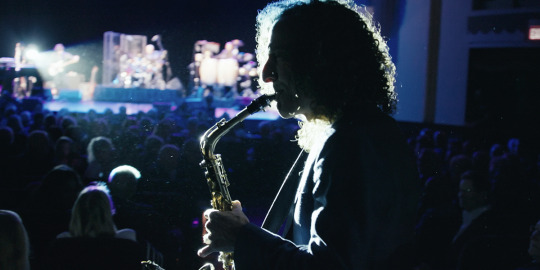
‘Listening to Kenny G’, directed by Penny Lane.
Next up, we have Sarah, who is looking for movies about music, and also some body horror. CB: We’ve got a number of great music docs this year. I have to mention Dionne Warwick, the queen of Twitter, who is the subject of Dionne Warwick: Don’t Make Me Over. It tells the story of this incredibly talented, determined and glamorous musician who broke so many barriers. She toured in the south during the Jim Crow era, making gains as a Black woman in the music industry and in the pop-music industry, not the so-called race-record or Black-music industry, which simply wasn’t done at the time. This documentary tells that story, and also shows her later work in the ’80s contributing to the fight against stigma and hysteria during the AIDS crisis.
PK: I’ll follow up Cameron by mentioning the Alanis Morissette film Jagged. We’ve also got a film about the great jazz pianist, Oscar Peterson, called Oscar Peterson: Black + White. Lastly, there’s a film about Kenny G, called Listening to Kenny G.
Diana Sanchez: For the body horror, I’d like to mention the debut film by Ruth Paxton, titled A Banquet. It’s about a young woman who insists her body is no longer her own, and is a service to a higher power. Her mother has no idea what to think. She stops eating, and her mother doesn’t know [whether] to believe her or not. I love Ruth Paxton’s work, the way she shoots the film, the way she shoots the food. It’s almost, as she refers to it, pornographic. It looks delicious and gross all at the same time.
I’d also like to flip to comedy quickly to mention Official Competition. The film stars Penélope Cruz, Antonio Banderas and Oscar Martínez. Cruz plays a filmmaker who puts together a well-known theater actor and a well-known box-office glamor guy, played by Banderas. The film speaks to the tension between high art and more popular art, testing those boundaries. It’s incredibly funny.
We’d love to squeeze a few more films out of everyone for our watchlists. Could you each recommend one film and try to sell it in ten words or less? CB: Let me try. Sundown, by Michel Franco. Tim Roth falls apart beautifully in Mexico.
TP: I’m going to go with the Mexican documentary, Comala. Filmmaker Gian Cassini explores the legacy of his father, who was a Tijuana hitman.
PK: I’ll go with Saloum, which is basically From Dusk Till Dawn in West Africa.
RC: I’m going to say The Wheel, a movie by Steve Pink. If you like Who’s Afraid of Virginia Woolf?, this is like that with a younger couple in a much more humane, intimate key.
DS: I’ll say I’m Your Man, a sci-fi where Maren Eggert dates a robotic Dan Stevens.
PK: I know Diana has been recommending a film called OUT OF SYNC, about an artist who begins to experience the sound of the world going out of sync. She starts hearing sounds from the past because people and things are out of sync with their surroundings.
NHY: I’ll go with The Gravedigger’s Wife, directed by Khadar Ahmed. It showcases the horn of Africa unlike you’ve ever seen it on screen.
Finally, for Cameron: with fall coming, what is the best TIFF 2021 movie to watch under a blanket, either because it’s cozy or because you’re terrified, or both? CB: Great question, which gives me a chance to talk about Earwig, the new film by Lucile Hadžihalilović. If you’ve seen Innocence or Evolution, her two most recent films, you’re prepared in terms of tone, but you’ve not even seen Lucille make a film quite like this. It’s eerie, disturbing, hypnotic, mesmerizing. You can’t stop watching, but you’re always afraid that something awful and horrifying is about to happen… and maybe it might.
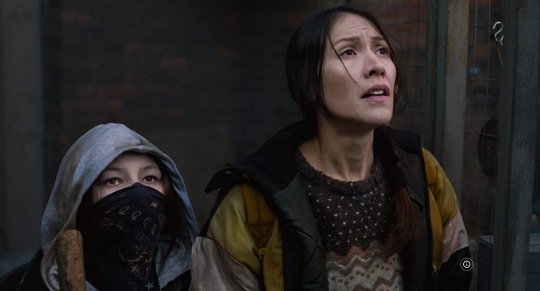
‘Night Raiders’, written and directed by Danis Goulet.
To bring it all back home, what would you say is the Canadian film of 2021? CB: It’s always hard to say, but I think in a year where we have Danis Goulet’s feature Night Raiders, that’s got to be the one. Danis has made some exceptional short films over the last few years that people might know. Her feature takes on the horrific, devastating story of residential schools and children torn from Indigenous families and put in institutions where the goal was to erase their Indigenous identity. She takes that terrible, real history that we’re grappling with right now in Canada, and turns it into a piece of speculative fiction, a kind of propulsive thriller.
By turning it into fiction rather than reality she can use all of the tools of cinema to tell a terrific story that’s exciting and has high stakes, but also has this deep resonance of a truth that we are, I hope, coming to terms with in this country.
The Toronto International Film Festival runs from September 9 to 18. This conversation has been edited for length and clarity. Follow TIFF on Letterboxd, and follow our Festiville HQ for regular festival updates.
#tiff#tiff21#tiff 21#tiff 2021#toronto#toronto international film festival#cameron bailey#midnight madness#jessica chastain#jane campion#benedict cumberbatch#saul williams#danis goulet#canadian film#letterboxd#festiville#letterboxd festiville#gemma gracewood#thom powers#nataleah hunter-young
3 notes
·
View notes
Link
Between the 1980s and before a decline in the early 2000s, the erotic thriller was one of cinema's most popular and risque genres. Usually, an erotic thriller features storylines that focus heavily on romance and contain graphic nudity and sex scenes.
RELATED: 10 Great Thriller Movies You Won't Believe Are Not On IMDb's Top 250
Some of these films have been praised while some have been considered "trashy" for focusing more on the salacious elements instead of the story. And while not as popular today, recent hits like Fifty Shades Of Grey prove there is still a market. During its heyday, Hollywood produced some great erotic thrillers that are still viewed by audiences looking for a dangerous and naughty evening.
10 In The Cut (2003) - 5.3

Directed by acclaimed filmmaker Jane Campion, In The Cut's story revolves around a teacher, Frannie, (Meg Ryan) who gets questioned by an investigator, Malloy, (Mark Ruffalo) after the limb of a murdered girl is found in her garden. The two begin a relationship. but Frannie starts to suspect the murderer might be Malloy himself.
Upon release, the film was controversial for graphic sex and for Meg Ryan's nude scenes, which many believed to be brave due to her wholesome image and for normally appearing in light romantic comedies. Despite mixed reviews, Ryan's performance has been praised as one of her best.
9 Crash (1996) - 6.4

Perhaps one of the most controversial erotic thrillers of all time is Crash. Directed by acclaimed filmmaker David Cronenberg, the film concerns a TV director (James Spader) who gets involved with a group of people who become aroused after watching automobile collisions.
Crash's premiere screening at the Cannes Film Festival incited "boos," but it was awarded a Special Jury Prize, which jury president and Godfather director Francis Ford Coppola refused to present to Cronenberg, due to his distaste for the film. The movie was banned in many countries around the world because of its subject matter and sex scenes, and its American release was delayed for several months.
8 Wild Things (1998) - 6.5

During their popularity, erotic thrillers were mostly made for mature adults, however, Wild Things was aimed at the younger 20-something generation. The film concerns a guidance counselor (Matt Dillion) accused of rape by two female students, but the detective (Kevin Bacon) investigating the charge detects a conspiracy is afoot.
Remembered for its verging-on-pornographic sex scenes, Wild Things actually has some clever twists and turns, plus a surprising performance by Bill Murray. Salacious on the surface, audiences enjoyed the fact there was more to it than just sex. Notably, the end credits connect the dots for the viewer on the film's twists.
7 Sea Of Love (1989) - 6.8

Similar in premise to Basic Instinct, Sea Of Love concerns a detective (Al Pacino) on the trail of a serial killer. He attempts to find the killer by placing a personal ad for himself to lure them on a date, but he ultimately begins falling for one of the suspects (Ellen Barkin).
Unlike Basic Instinct, which puts emphasis on the sexual chemistry between the leads, Sea Of love puts the emphasis on the romantic chemistry, making the viewer hope the killer isn't the sexy Ellen Barkin. Over the years, Sea Of Love has become a favorite among Pacino fans.
6 Fatal Attraction (1987) - 6.9
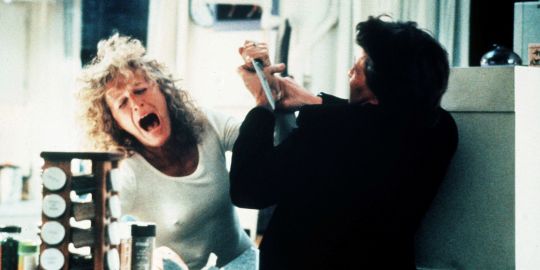
Perhaps the most popular erotic thriller of all time, Fatal Attraction succeeds not because of its more lurid and graphic moments, but because those moments elevate and make more meaningful everything else in the movie. The film concerns Dan (Michael Douglas), who has an affair with Alex (Glenn Close). Unfortunately, she grows attached to him, and when he tries to break off the relationship, he realizes she won't give him up easily, leading to dangerous consequences.
RELATED: 10 Best Thrillers Involving Husbands And Wives
Director Adrian Lyne crafts a thriller for adults with the intention to not just thrill and titillate but to ask viewers important questions about fidelity and marriage. Lyne would have similar success in the genre with Indecent Proposal and Unfaithful. Ultimately, Fatal Attraction was a huge box-office hit, earning a Best Picture Oscar nomination and a Best Actress Oscar nomination for Close's brilliant performance.
5 Basic Instinct (1992) - 7.0

Following Fatal Attraction's immense popularity, Basic Instinct kicked the genre into high gear. Erotic thriller veteran Michael Douglas stars alongside, at the time, rising star Sharon Stone. Douglas plays a detective, Nick, investigating a murder that resembles the work of a writer, Catherine Trammel. As Nick investigates further, he begins an affair with the seductive and possibly murderous Trammel.
Known at the time for its graphic sex scenes, Basic Instinct is not only salacious but a well-crafted, and at times, Hitchcockian thriller. The screenwriter, Joe Ezsterhas, would eventually write more erotic thrillers like Sliver, Jade, and others. A sequel, Basic Instinct 2, with Stone, would be released 14 years later, but by then the genre had declined in popularity.
4 Dressed To Kill (1980) - 7.1
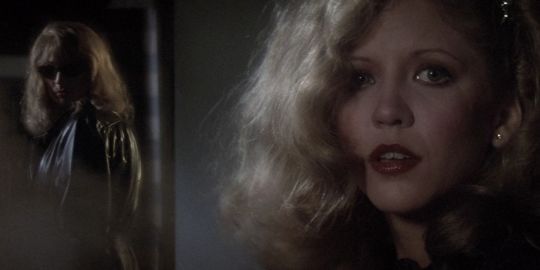
Considered to be the erotic thriller that started the trend, Dressed To Kill is directed by suspense master Brian DePalma, who constructs the film with elaborate Hitchcock-style sequences. Starring Michael Caine, the plot concerns a woman who witnesses the murder of a psychiatrist's patient by a mysterious blonde woman, only to find herself the murderer's next target.
Praised by critics and audiences at the time for being suspenseful, lurid, and shocking, Dressed To Kill has since been considered problematic due to its depiction of women and violence toward them.
3 The Last Seduction (1994) - 7.1
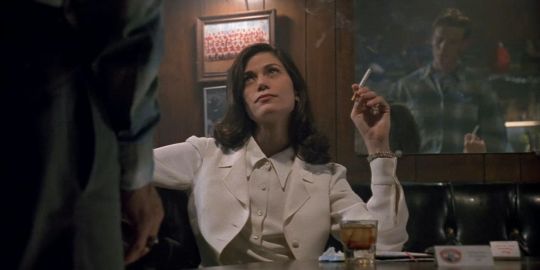
After stealing drug money from her husband, sexy and alluring Bridget (Linda Fiorentino) flees to Chicago, seduces a local man, and devises a way to get him to kill her pursuing husband. Because of the script, the production company responsible for the movie felt The Last Seduction would be something for late-night television audiences that want a sexy watch, however, the filmmakers set out to make the movie something much more than that.
RELATED: Taxi Driver & 9 Other Neo-Noir Masterpieces
Despite being an erotic thriller, the film received great reviews upon release for its wit, dry humor, and especially for Linda Fiorentino's sexy performance. In the years since, viewers have praised Fiorentino's character as a refreshing spin on the femme fatale character type.
2 Bound (1996) - 7.3

Before the Wachowskis directed The Matrix, they needed to make a "practice film" to prove they could do it, and the result was Bound - an erotic thriller about two lesbian lovers who attempt to steal millions of mafia money. At the time, it was rare for a lesbian relationship, let alone lesbian sex, to be depicted in a mainstream film.
When released, critics praised the film's stylish direction and neo-noir plot, and for having LGBTQ+ leads without the plot revolving around it. From there, the Wachowskis went on to make The Matrix and more cinematic history.
1 Body Heat (1981) - 7.4

Inspired by the classic film Double Indemnity, Body Heat centers around lawyer Ned (William Hurt), who kills the wealthy husband of his sexy lover, Matty (Kathleen Turner), so that she can inherit his money and they can run away together. However, Ned soon discovers Matty isn't who she seems.
At the time, the film was noted for its many graphic sex scenes, with even more left on the cutting room floor. Fortunately, what director Lawrence Kasdan clearly really cared about was the hard-boiled thriller elements, which are stylish and skillfully crafted. In addition, Kathleen Turner gives a powerhouse and obviously sexy performance in her screen acting debut.
NEXT: 10 Best Movies About Cheating And Infidelity, According To IMDb
10 Best Erotic Thrillers, Ranked By IMDb | ScreenRant from https://ift.tt/33BFltx
5 notes
·
View notes
Text
Bright Star : The visualisation of tenderness
This movie is one that I constantly revisit, the beauty and softness of it is something I want to carry with me. The soft colors, the delicateness of the moments that we see, and yet a story that moves hearts. This is the sort of stories I want to be able to tell and this is why I really wanted to write about this film.
I am just going to preface this article by saying that BRIGHT STAR (2009) directed by Jane Campion is one of my all time favorite movies and that I am going to be extremely biased in this article. Now, that this is out of the way, let’s move on to the article. Bright Star is a movie about the love story between John Keats and Fanny Brawne. But ultimately, it is a story about yearning, poetry and loss, at its core, it’s a story about love. Every shot of this movie encapsulates the tenderness and kindness which drives the story and Jane Campion’s directing. This movie is a highly romanticized version of John Keats’ life that centers Fanny and John’s romantic relationship and not necessarily on Keats’ career as a future legendary poet. The angle she chose to tell this story is a very soft and kind one, that is very empathetic toward both its main characters.

I’m going to start by placing the movie in its cultural context as well as in the cinematic industry that was prevailing in 2009 and still is today. Jane Campion is one of my favorite female directors and one I would qualify as an Auteur. Unfortunately, the cinema industry being as it is, I feel like so few women have the standing in the industry as artists that a lot of men have. Not to turn this into an interlude on the inherent inequality of the cinema world at large, but it’s easy to think of male directors that have a certain aesthetic and a recognizable way of making their movies. I’m thinking of Wes Anderson, Martin Scorsese, Quentin Tarantino, Guillermo Del Toro etc etc. For better or for worse, those cineasts are known for a certain style of works that is attributed to them . Female cineasts who get to be artists for more mainstream are very few in between, Jane Campion is one of them, but I could also name Anna Biller, Agnès Varda and Greta Gerwig. Women work at all scales of the industry and yet it feels their work is not valued enough for varied reasons. The industry doesn’t want to take A Risk (™) on a female cineast the way they do with male movie makers. The industry still has so much progress to do when it comes to centering stories made by people that aren’t straight cis white men, the films being produced for a mainstream audience are still majorly directed, produced and written by white men. You only have to see the recent award shows where the best directors nominees were all white men, despite women and people of color presenting amazing work constantly. Representation is important in what you see in the movies, non-white actors and stories featuring marginalized people, but what is also truly important as well, and I feel isn’t talked as much in the broader discourse about this subject, is how it’s important to have diversity behind the camera as well, whether it’s the director, writer, producer, crew, etc. I think we can safely say that progress was indeed made since 2009, but a female filmmaker being celebrated is still so rare to this day that i feel it’s important to remark on.
Jane Campion was still a celebrated filmmaker, despite having taken a hiatus from the film industry, and Bright Star (2009) did very well. The movie received many awards and nominations in such prestigious institutions such as Cannes or the British Independant Film Awards. Campion describes the film as more intimate than the previous ones she had made and in this regard, she is right. The way the film is shot and directed brings you closer to the characters and the story. The intimacy and the tenderness is almost overwhelming at times, she uses shots that are both very close and very near to give you a close sense of nearness and intimacy and to convey the emotions the characters are feeling, but also Campion uses a lot of very ethereal and shot. Hands brushing, butterflies flying around while one is lying on the grass, make this movie a literal visualization of soft romantic yearning.

One of the most important things to me in this movie, is how kind the narrative is toward Fanny Brawne. History hasn’t been kind to her, especially when we know that historians in general (ad im talking precisely white male cis straight historians who have been the ones to mainly write our History) have created the narrative that she was a despicable person, that she was a frivolous woman who didn't deserve to be in the vicinity of their favorite poet, simply on account of her being a woman who was more interested in clothes than rhymes and verses. and maybe she was, but on all accounts, John Keats was terribly in love with her, and she was equally in love with him. I just want to preface this by saying I would die for keats, I adoooore his poems and his writing and I have his complete works on my bedside table at this very moment.. I feel like its a very special kind of misogyny (or a very mundane one, now that I think about it) where the simple feminine presence of Fanny brawne near John Keats somehow tarnished him. The fact that she loved feminine things was a flaw that she needed to overcome for most male historians, they thought her futile and shallow, simply for the fact that she was a woman who was interested in clothes and delicate pretty things.
But more than that, she was also a skilled seamstress, she made her own clothing and was delightfully creative and hardworking, and the way Campion frames the craft of Fanny in the movie shows how valuable she thinks this skill is. Garment making is a really complex craft that requires skill and time and hardwork and to this day still isn’t valued the way it should be. So it should be no surprise that history, mostly written by male white cis historians, remembers Fanny Brawne as a vapid shallow woman who only cares about clothes. We can see that the character of Charles Brown, who will later be introduced as one close friend of Keats, is a bit of a placeholder for this sort of perspective. He constantly tries to thwart Keats and Brawne’s budding romantic relationship because he doesn’t think Keats should bother with such frivolous affairs. The movie is incredibly kind and tender in the way it showcases how craft, any craft, whether it be sewing or writing poetry, is work and a labour of love, and does not diminish the value of either to the advantage of the other.
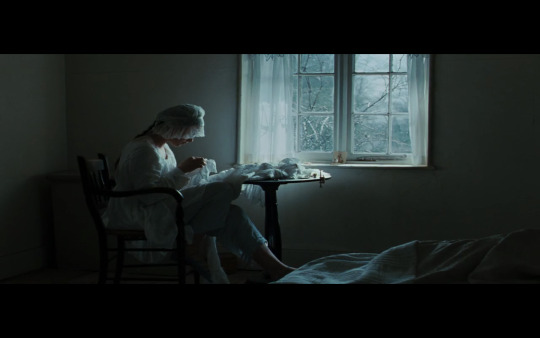
John Keats is ofc a central part of this story. Ben Whishaw succeeds perfectly in bringing the tragic poet to life. Whishaw is perfect to play a poet who is about to die of consumption, he’s just very tragic that way. His delivery is perfect and he is the perfect casting for John Keats. (If you have the time, this reading of La belle dame sans mercI by Ben Whishaw is so delicate, beautiful and legit brings tears to my eyes ) I’m sure most of you know the story of Keats, but it’s still very tragic to think about : a poor and unsuccessful poet who died incredibly young and who never got to truly see how impactful his art would be in the future. Keats is still remembered today, but he never got the chance to enjoy the success his poetry had, years after his death. He never got to marry the woman he wanted to marry because he didn’t have the means to do it. He created beauty from his words and then died alone in Italy at just 25 years old. It never truly hit me before this year, when I did my annual rewatch of the movie, how young Keats truly was, being now 24 years old at the time of writing this article, it truly was a life that has been cut too short.

The directing of Jane Campion is very deliberate, and i think there’s a vision to this movie that is incredibly powerful and obvious. The movie’s pace is very slow, but I think sometimes we need media that just takes the time to slow down and to just enjoy the scene enfolding in front of us. I’m thinking about some scenes where you can only see Keats sitting on a chair outside. He is writing. The wind is moving through the leaves, the birds are singing in the distance, and Keats is writing. A lot of people would say that the scene is useless when it comes to moving the plot forward, and I guess i would agree, strictly speaking, that it doesn’t do much in terms of moving the plot forward, but it does set the atmosphere wonderfully. You can feel the calmness and the ethereal feeling of Keats’ poetry. Campion scatters moments like these throughout the movie, where she takes the time to slow down and get lost in the moment. It’s something that i particularly adore in media, as life constantly feels like it’s getting away from me, it reminds me to slow down and take the time to breathe.
The delicate colors of the cinematography are another aspect that I think really brings such a soft and tender dimension to the movie. The director of photography for this specific movie is Greig Fraser who also did the cinematography for such movies as Rogue One, Vice, as well Batman film starring Robert Pattinson but we aren’t talking about that atm. The colors that have been used throughout the film are very soft and soothing. Soft pinks and soft greens, as well as deep rich hues of blues and browns. There’s a haziness to this movie that very much feels like being thrown into a poem.
This wouldn't be an article written by me if there wasn't any mention of the costume design. The costume design in this movie is being taken care of by Janet Patterson, who had worked previously on other Campion’s movies (Portrait of a Lady, The Piano). The work she does here is marvelous. She manages to create such a beautiful wardrobe for each of the characters. From the colorful dresses of Fanny Brawne to the outfits of the last extra, everything is carefully thought of, and the attention to detail really stands out when you look at the clothing, from the historical research to how well the costumes fit within the realm of the BRIGHT STAR cinematic universe. John Keats’ outfits, in particular, were particularly delightful, he,s always clad in deep blues and clothes that seem worn and comfortable. Something about these darker blues just seem so melancholic compared to the rest of the costumes, especially in contrast with Fanny Brawne’s brighter dresses.

The last thing I will touch upon is the tenderness of the story in itself, despite how sadly it ends. The love story between John Keats and Fanny Brawne unfolds slowly, and then all at once. Despite all of what they go through, the love and the care they give each other is tremendous. And the times they have to be apart, you feel the yearning and longing for the other as if enveloping the scene. Having to wait for another letter, having to acknowledge that they can’t be together is heartbreaking, especially as Keats is desperately trying to do right by Fanny. They want to get married, but Keats is an unsuccessful poet who is in debt, and Fanny is from an upper middle class family and won’t be allowed to marry beneath her rank. I feel like it’s such a mundane story and yet, it feels world shattering to them, especially the last moments they share when Keats becomes ill and he has to leave for Italy to rest and try to get better, but they both know that it’s probably the last time they’ll see each other breaks me. The tenderness in each movement and each conversation they had was tinged by the heavy weight of saying goodbye one last time.
And then. The letter arrives. With the news of Keats’ death. And his fiancée cuts her hair, dons a black dress. And mourns him.

46 notes
·
View notes
Text
Research. This week I looked at inspiration from cinema and film. The interest in underwater, being drawn to something, being underwater, the depths and the blue. I also looked at the effect of sound on our experience. I chose this scene front the movie ‘The Piano’ by Jane Campion. In this scene a woman Ada places her foot among the rope which was rapidly being pulled I to the water by her piano which was being pushed overboard a boat. It was a very powerful scene as she was pulled down into the depths of the ocean by a musical instrument. An instrument which had been her life, her love, her voice. The scene used a combination of sound, colour, movement and atmosphere to create a very moving moment. In a way she was being pulled by the things she loved but this time to her death. She makes the choice to untie her shoe and swims back up but I thought it was a very interesting bit of research to include.
1 note
·
View note
Text
Feminism and The Piano
So, this week we are talking about ‘feminine aesthetic’ in relation to the piano and, as is custom, there are some questions I have been given to answer in my seminar – and so, because of a need for content, I will be answering them here too. Hope y’all enjoy!
Additionally, I can’t find anywhere legal to rewatch the film, so I won’t be able to upload a film review per se – I’ll try to add as many of my thoughts as possible into this blog instead.
The first question is about whether or not there is a ‘feminine aesthetic’, as if there is a masculine one – the film world is run by men, whether they be directors or producers or DPs or actors; most of everyone’s favourite films are created by men. So naturally, the male gaze is something that we have all heard of and are familiar with (I would argue that we are also so used to it that we may not notice it unless we are really looking? Might be wrong, let me know your thoughts!) So, in essence, what would a film without the male gaze look like? And, would that equate to a film with a feminine aesthetic? The male gaze sexualises women, sometimes to an extent where they are no long people, but objects; an extreme example is the introduction of Tina Carlyle in The Mask (1994) – the camera pans up from her foot, meaning her face is the last part of her that the audience see. The camera, therefore, is inacting the male gaze and forcing it upon the audience. This puts the female audience in an awkward situation – without even beginning to touch on subjects like body confidence and positivity and female empowerment and all of that, but rather the fact that they have to view this film from a secondary perspective (saying that, is that because we are assuming those who see through the male gaze are straight? What about gay men? What about gay women? Or, instead, is it a biological brain thing, because men’s brains react to different stimuli in different ways to women’s brains? More research is needed – unless someone wants to just tell me to save my tired baby brain). But back to the point, I believe that I saw the opposite in The Piano, something I am going to call the ‘female gaze’, and I’m calling it that because its an actual thing and this is what it is; like the male gaze, but for females, essentially. I believe this is most evident is how the camera interacts with the intimate scenes between Ada, and Baines and Stewart – the shots seen appears to sexualise the men rather than Ada herself, but doesn’t take it too far, if that makes sense. Instead, the camera focuses on the romance of the intimacy, rather than making it sexually explicit, and I think having a female director certainly helps with this. I also noticed that a lot of the crew are also women which also assisted in creating and portraying the female gaze, which aids in creating the feminine aesthetic.
The second questions relates to the subversion of the following quote; “within a sexist ideology and a male dominated cinema, woman is presented as what she represents for man”. The film doesn’t demonstrate what woman represents, but rather what woman and man can do for each other, e.g. the transaction prostitution between Baines and Ada. I guess that Stewart only sees what Ada represents, rather that who she is as a person. Someone who does get taken advantage of is Ada’s daughter – she needs to translate her mothers sign language to those who do not understand it and takes messages to various people throughout the film. However, I do believe that she deserves what she gets because she is such a whiney little bitch and snitches on her mother to a man whom she swore she would just stare at and not respond to. Maybe she’s just a badly written character.
The third question is as follows; how are conventional cinematic modes of ‘looking’ disrupted in The Piano? Who is the object of desire in the film? The quote related to it was too long to type out, but essentially said that Ada is independent because she refuses to become the stereotype of a woman in film, and links to voyeurism which applies to both characters in the film and the audience in the cinema. I would argue that Ada is still the object of desire during the film as she is lust after by Stewart and Baines. Alternatively, the piano is the object of desire because of how passionate Ada is about it, and how dedicated Stewart is to having rid of it, and how curious Baines is to hear it being played. The voyeurism is interrupted in the film by desire – Baines desire for Ada, and Stewarts desire to keep Ada for himself – and interrupted in the cinema by the lights that come on at the closing of the film, and by the other people sitting in the seats around them.
The fourth question is about how the sex scenes are portrayed in the film, which appear to be different to how men direct sex scenes – the director of The Piano (Jane Campion) is quoted to have said that men direct sex scenes in an athletic, soft porn way, whereas in the film there is a much more natural approach to it – there is no romantic music or ambient lighting, it’s a moment of passion between two people that have a connection. I’ll be completely honest, it didn’t seem particularly extraordinary, it was just two people being intimate.
The final question challenges how the film was received upon its release, and I think I can understand why – the film can be used as an example of adultery (even though Ada never loved Stewart) and shows spousal abuse when he removes her finger. Additionally, Ada and Baines’ relationship began as transactional, similar to that of prostitution. On first viewing, I found it very unsettling that Ada had to endure it to get her piano back, and the fact that she develops feelings for Baines by the end of the film does not negate that. Instead, I’m choosing to focus on her passion and dedication to this piano that was her voice for years.
2 notes
·
View notes